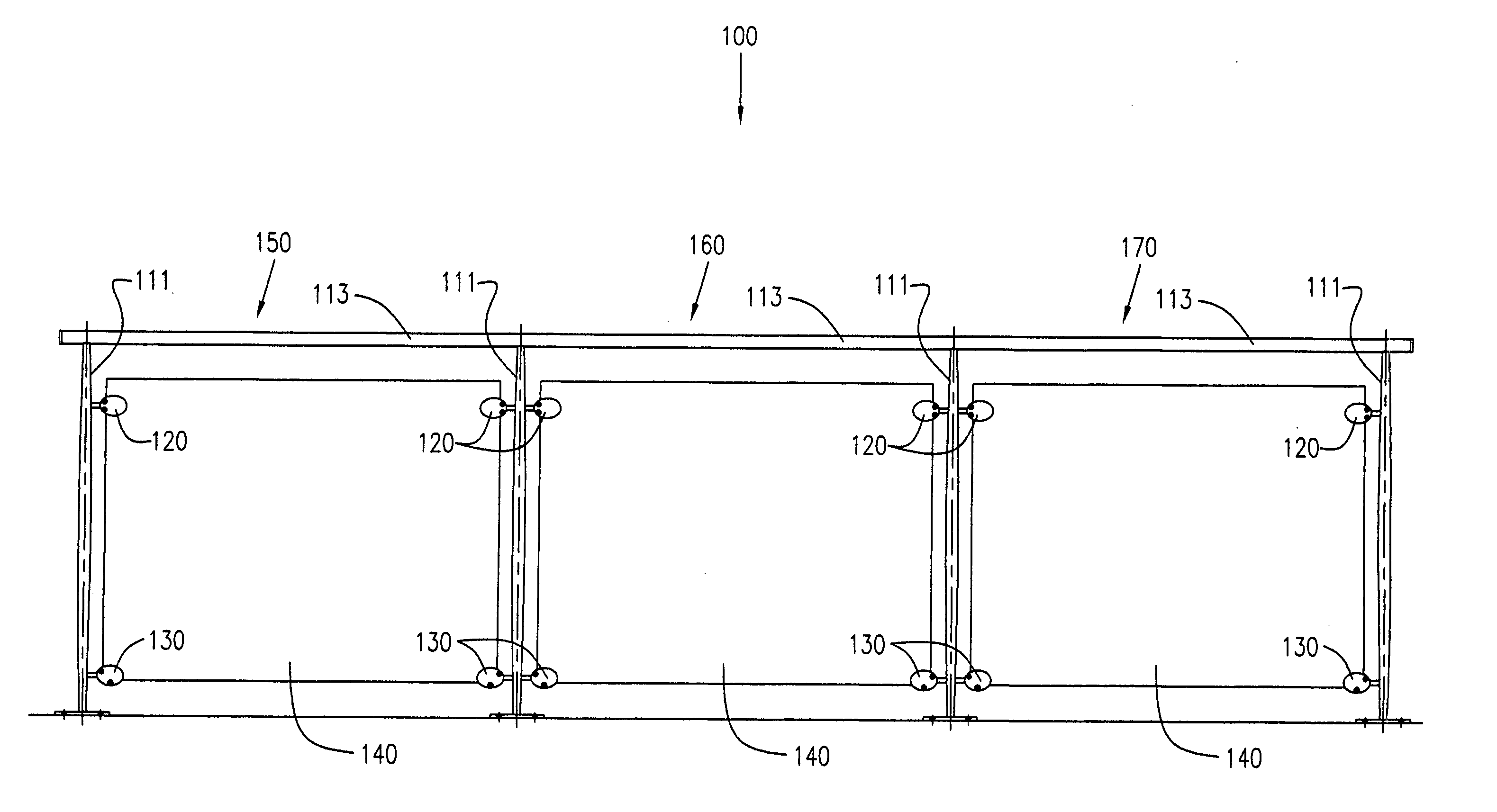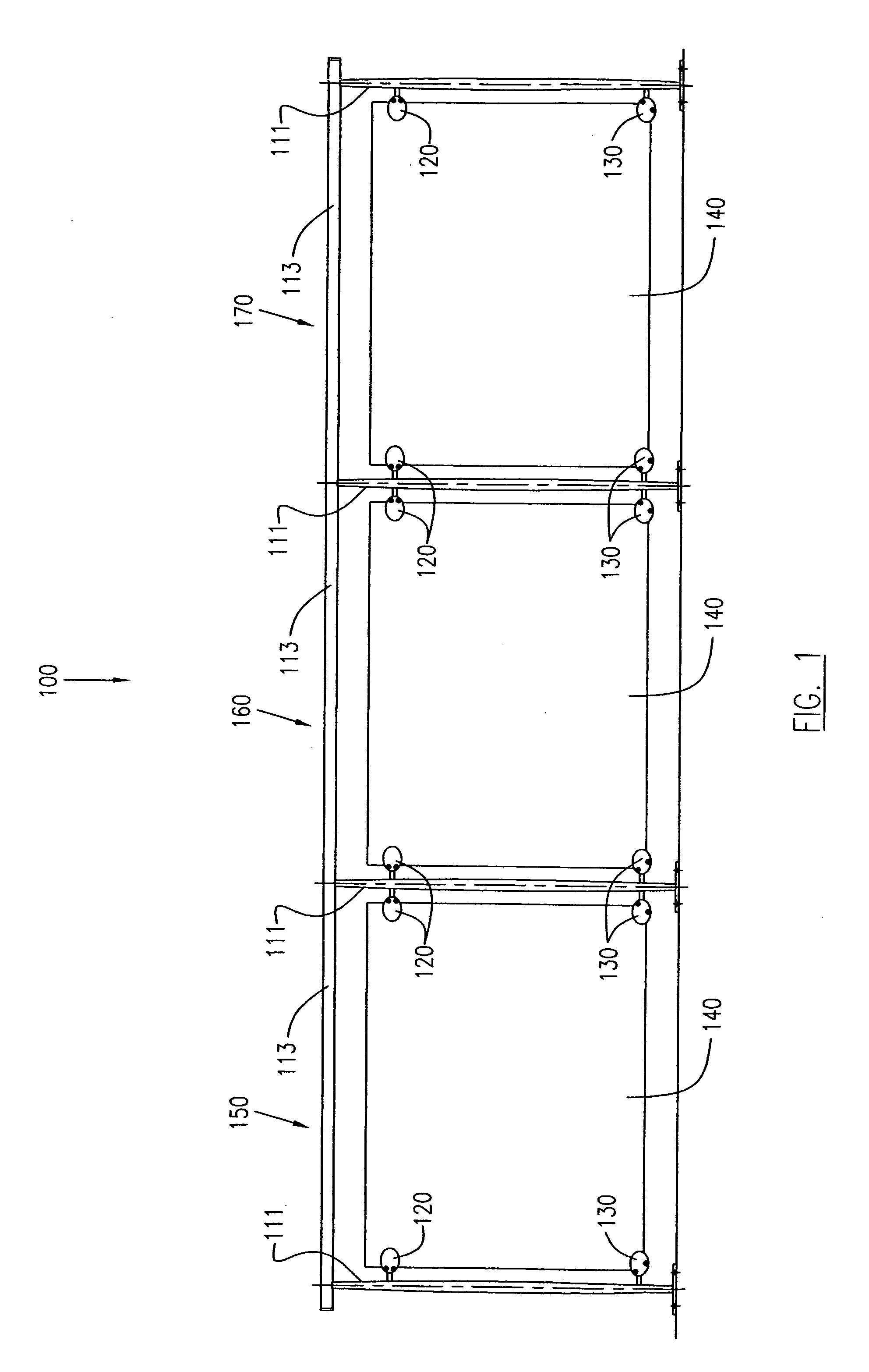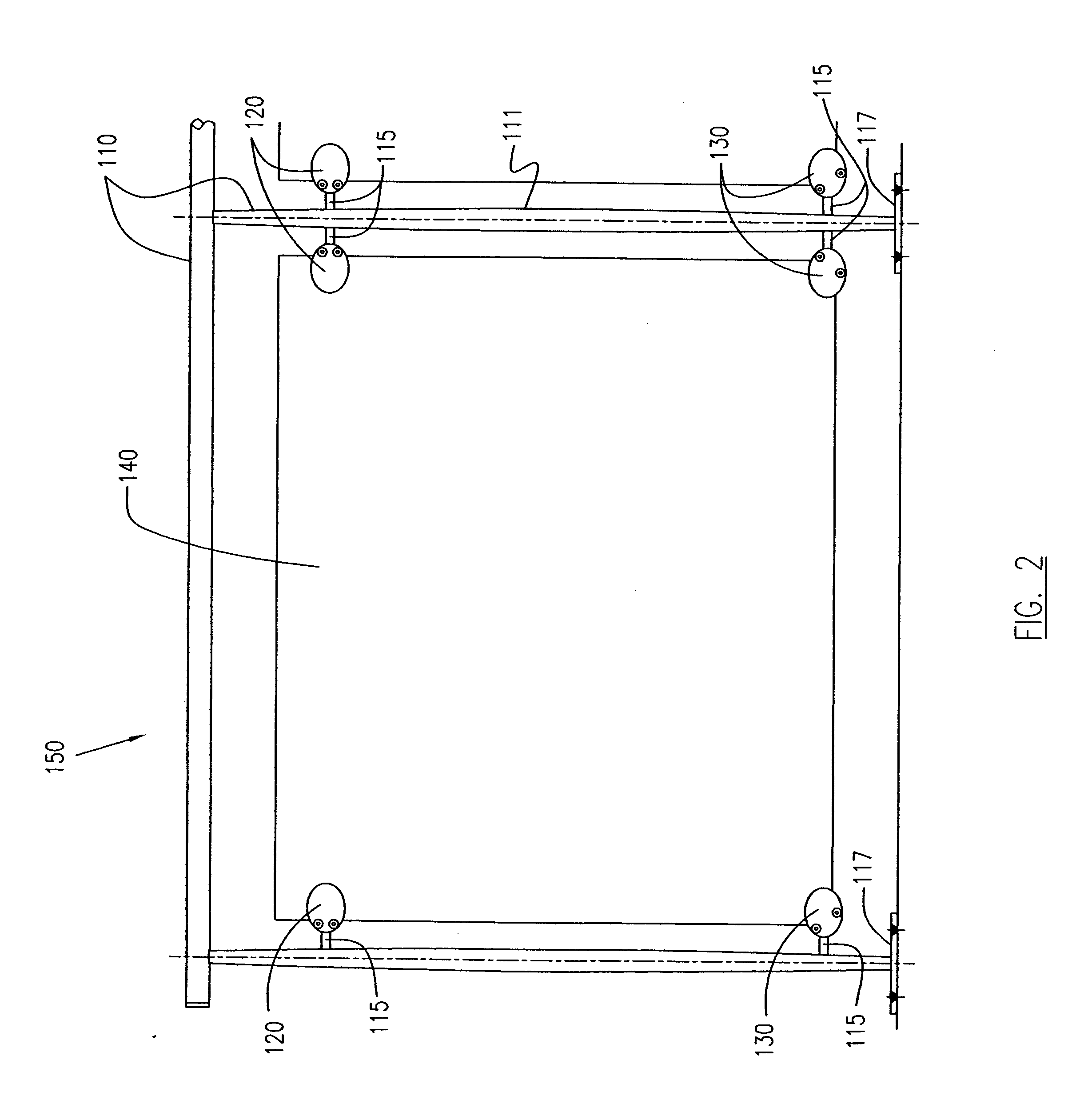Panel barriers
a technology of panels and barriers, applied in the field of panels, can solve the problems of material cracking or fracture, ceramic or glass panels that require a great deal of pressure to suspend, and the pressure required to suspend a panel generally increases with increasing weight, so as to reduce the stress force on the material and reduce the stress for
- Summary
- Abstract
- Description
- Claims
- Application Information
AI Technical Summary
Benefits of technology
Problems solved by technology
Method used
Image
Examples
Embodiment Construction
[0027] This invention relates to a system for holding and securing materials without the need for drilling holes in the material or cutting notches in the material. The present invention holds the material with reduced pressure as compared to the prior art.
[0028]FIG. 1 is a side elevational view showing several sections 150, 160, 170 of a panel barrier system 100 according to one embodiment of the present invention. Each section in this embodiment has a frame 110 having at least one vertical member 111 and a horizontal member 113.
[0029] A panel 140, which may be made of various materials, is supported and stabilized within the frame 110. A plurality of connectors 115 are attached to the vertical members 111 and extend generally horizontally.
[0030] Each connector is attached to either an upper support 120, or a lower support 130. Lower supports 130 are designed to provide vertical member and hold the weight of the panels 140, while stabilizing panels 140 from moving in other direc...
PUM
 Login to View More
Login to View More Abstract
Description
Claims
Application Information
 Login to View More
Login to View More - R&D
- Intellectual Property
- Life Sciences
- Materials
- Tech Scout
- Unparalleled Data Quality
- Higher Quality Content
- 60% Fewer Hallucinations
Browse by: Latest US Patents, China's latest patents, Technical Efficacy Thesaurus, Application Domain, Technology Topic, Popular Technical Reports.
© 2025 PatSnap. All rights reserved.Legal|Privacy policy|Modern Slavery Act Transparency Statement|Sitemap|About US| Contact US: help@patsnap.com



